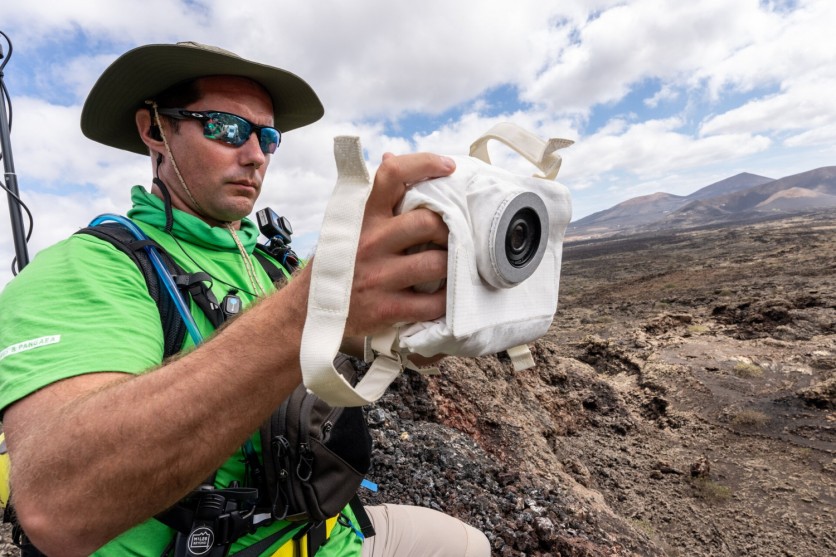NASA and the European Space Agency (ESA) have collaborated on testing a new handheld camera designed to capture high-quality images of the lunar surface for the upcoming Artemis missions.

Handheld Camera for the Moon
The Handheld Universal Lunar Camera (HULC) underwent rigorous testing in lunar-like terrains in Lanzarote, Spain, as part of the PANGAEA training program.
This initiative aims to prepare astronauts for future lunar missions, equipping them with the skills of effective field scientists.
The ESA Electronic Field Book played a pivotal role during geological field trips, allowing instructors to monitor and support the crew's exploration activities in real-time. This year, the science team also received live audio and video feeds, enhancing the training experience.
The newly developed lunar camera is based on commercially available cameras known for their light sensitivity and advanced lenses. To prepare it for the harsh conditions of space, NASA engineers made several adaptations, including adding a protective blanket for dust and thermal insulation, as temperatures on the Moon range from minus 200 to 120 degrees Celsius.
The camera was also equipped with a set of user-friendly buttons to accommodate astronauts wearing gloves and bulky spacesuits.
ESA astronaut Thomas Pesquet, renowned for his prolific photography in orbit, praised the camera's design after using it during the PANGAEA training. He commended the engineers for their effective reconfiguration of the buttons, ensuring simplicity and reliability in camera operation.
Capturing images will play a crucial role in documenting scientific discoveries during upcoming Moon missions. One of the primary objectives of the PANGAEA program was to select the most suitable lenses for lunar photography.
"The lunar camera will be one of many tools they will need to handle on the Moon, so it should be easy to use. The human factor is a big deal for us because you want the camera to be intuitive and not taxing on the crew," said Jeremy Myers, NASA's lead for the HULC camera.
Artemis III
The Artemis III mission, set to land near the South Pole of the Moon, presents unique challenges for photography due to factors like operating the camera with gloves, low light levels, and significant contrasts between bright and dark areas.
Future moonwalkers will be tasked with capturing a range of shots, from close-ups to panoramic images and videos, necessitating careful selection of lenses and settings.
While the core of the camera remains consistent, ongoing refinements to the interface and housing are underway, according to ESA. The camera has undergone extensive testing to address the key challenges of space, including thermal, vacuum, and radiation effects.
Additionally, its resilience to the abrasive nature of lunar dust was evaluated during a simulated moonwalk in Arizona, USA. The camera's development is an ongoing process, with further modifications planned as NASA advances toward the Artemis III lunar landing.
The goal is to create a versatile and reliable camera capable of capturing high-quality images of the Moon for years to come, serving crews from various countries in their exploration endeavors.
Related Article : NASA's Artemis II Moon Rocket Core Stage Nears Completion as It Enters Final Assembly Phase

![Apple Watch Series 10 [GPS 42mm]](https://d.techtimes.com/en/full/453899/apple-watch-series-10-gps-42mm.jpg?w=184&h=103&f=9fb3c2ea2db928c663d1d2eadbcb3e52)



